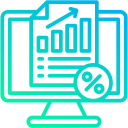1. The Critical Role of Audit-Ready Reporting in Modern Organizations
In today’s rapidly evolving business landscape, maintaining audit-ready reporting is crucial for organizations committed to transparency, compliance, and operational integrity. Audit-ready reports are comprehensive, accurate, and easily accessible documents that showcase an organization’s adherence to regulatory standards and internal policies. As global regulatory frameworks like Sarbanes-Oxley (SOX), GDPR, and industry-specific requirements grow more complex, the ability to produce instant, dependable reports has become vital for resilience and stakeholder confidence.
One significant challenge modern companies face is managing vast and complicated data required during audits. Manual data collection and report creation are not only time-consuming but also prone to errors, which can jeopardize compliance efforts and lead to penalties or reputational harm. Inefficient processes can cause delays during audit periods, impairing management’s capacity to respond swiftly to regulatory inquiries.
All-in-One Free LMS for Organizations Across Industries
Say goodbye to trials and unreliable open-source solutions. Unlock the full potential of your team with Paradiso’s free LMS – the easiest way to streamline learning and development.
To address this, many organizations are turning to automation solutions that streamline data collection, validation, and report generation. Automated audit-ready reporting systems enable real-time tracking and instant report creation, reducing manual workload and minimizing errors. These systems promote consistency, completeness, and regulatory compliance, fostering a proactive approach to governance.
Moreover, automated reporting enhances organizational agility, allowing companies to adapt quickly to new compliance standards and audit schedules. Increased transparency through automated documentation builds stakeholder trust by providing clear evidence of adherence and internal controls.
In conclusion, as compliance complexities grow, implementing automated, audit-ready reporting is not merely beneficial but essential. This strategic shift improves efficiency, accuracy, and readiness, transforming how organizations prepare for and manage audits in an increasingly regulated environment.
2. Essential Elements of Audit-Ready Reports and the Role of LMS in Streamlining Documentation
Ensuring audit-ready reports is a fundamental aspect of compliance, transparency, and operational excellence. These reports comprise critical components such as detailed training records, comprehensive compliance documentation, and supporting evidence that demonstrate adherence to regulatory requirements. Proper organization and easy accessibility of these elements are vital for smooth audit processes and minimizing non-compliance risks.
Key Components of Audit-Ready Reports
- Training Records: Accurate, up-to-date training records show employees have acquired necessary skills. This includes completion certificates, attendance logs, assessment results, and records of ongoing education. Maintaining these records helps meet regulatory mandates and highlights skill gaps for future training.
- Compliance Documentation: These include policy manuals, safety procedures, audit reports, incident and corrective action records, and certifications. Ensuring this documentation is comprehensive, current, and easily retrievable enhances audit readiness.
- Supporting Evidence: Relevant data or records such as inspection reports, maintenance logs, environmental monitoring data, and communication records reinforce compliance claims. Ready access to these expedites assessments and reduces non-compliance findings.
The Role of LMS as a Centralized Platform
A Learning Management System (LMS) is instrumental in organizing and streamlining audit documentation. It consolidates training records, compliance files, and evidence into a secure, centralized repository. Key benefits include:
- Centralized Storage: All documentation stored securely in one location, reducing risks of data loss or disorganization.
- Automation of Updates and Tracking: LMS automatically updates training statuses, tracks progress, and flags upcoming renewals, ensuring data accuracy.
- Standardized Documentation: Templates and automated report features promote consistency across audit materials.
- Easy Accessibility: Authorized personnel can access documents anytime, anywhere, speeding up retrieval during audits.
- Compliance Monitoring: Many LMS platforms monitor compliance statuses and generate audit-ready reports, making documentation management seamless.
Overall, integrating these elements within an LMS empowers organizations to efficiently maintain audit-ready reports, fostering a culture of compliance and operational excellence.
Experience the smarter way to learn with
Paradiso LMS!
Experience seamless learning, smart automation, and a powerful AI-driven LMS that scales with your growth.
• Quick setup • Unlimited potential
3. Automation Technologies, Integration Strategies, and Best Practices for LMS Audit Reporting
Leveraging automation within Learning Management Systems (LMS) is vital for producing accurate, real-time audit reports. These reports help ensure compliance, identify training gaps, and preserve data integrity across various organizational levels. This section explores key automation tools, effective integration strategies, and best practices to optimize LMS capabilities for audit reporting.
3.1 Key Automation Technologies in LMS Audit Reporting
Modern LMS platforms incorporate advanced automation features, including:
- Automated Data Collection: Integration with databases and third-party systems captures learner activity, course completions, assessments, and compliance metrics in real time using standards like SCORM.
- Scheduled Reports & Notifications: Automated scheduling delivers timely audit summaries at regular intervals (daily, weekly, monthly), reducing manual effort.
- AI & Machine Learning: These tools analyze data to detect patterns, anomalies, and risks, enhancing report precision and providing actionable insights.
- Data Visualization Dashboards: Automatically generated dashboards display current analytics, simplifying interpretation and decision-making.
3.2 Integration Strategies for Enhanced Audit Capabilities
Seamless integration with other enterprise systems enhances audit report accuracy. Key strategies include:
- API Integration: Using RESTful APIs to connect LMS with HRIS, compliance databases, and ERP systems ensures synchronized data.
- Single Sign-On (SSO) & LDAP: Unified authentication and user management accurate reflects activity across platforms.
- Data Warehouse Connectivity: Centralizing LMS data into warehouses supports complex analytics and reporting.
- Third-party Analytics Tools: Tools like Power BI or Tableau allow customized, deep-dive reporting for audits.
3.3 Best Practices for Leveraging LMS for Audit Reporting
Organizations should adopt these best practices:
- Define Clear Metrics & KPIs: Set specific targets such as course completion rates, assessment scores, and compliance statuses.
- Automate Data Validation: Validate data regularly to catch errors and anomalies early.
- Prioritize Data Security: Ensure compliance with GDPR, HIPAA, and other regulations through role-based access, encryption, and secure handling.
- Update & Test Automation Workflows: Continuously review and refine automation routines to accommodate system upgrades or changing requirements.
- Use Standardized Templates: Develop and reuse report templates for consistency and efficiency.
- Train Teams: Equip administrators and auditors with skills to interpret reports and utilize automation tools effectively.
Embracing these technologies and practices ensures precise, timely, and comprehensive audit reports, reinforcing compliance and transparency. Solutions like Paradiso LMS offer robust automation and integration to meet these demands effectively.
4. Real-World Case Study: Successful Adoption of LMS Automation for Enhanced Compliance
In today’s complex regulatory climate, organizations increasingly adopt LMS automation to streamline compliance training, reduce manual oversight, and enhance audit readiness. This case study highlights how a mid-sized manufacturing firm transformed their compliance processes through LMS automation.
Background and Challenges
Prior to automation, the company struggled with:
- Manual tracking of employee training and certifications, leading to inaccuracies and delays
- Cumbersome audit preparations due to scattered documentation
- Limited visibility into training progress across departments
- Risk of non-compliance penalties and regulatory sanctions
The manual approach relied heavily on spreadsheets and paper certificates, increasing errors and inefficiency.
Implementation of LMS Automation
The company partnered with a top LMS provider specializing in compliance automation. Key steps included:
- Automated enrollment to mandatory compliance courses with automated reminders and deadlines
- Real-time dashboards to monitor individual and departmental compliance status
- Automated certification issuance upon course completion, with recertification alerts
- Automatic compilation of audit-ready reports and logs
- Integration with existing HRIS for synchronized employee data and records
Outcomes & Benefits
The deployment of LMS automation produced significant results:
- 70% reduction in manual workload for compliance teams
- Speeds up audit preparation from weeks to days
- Training completion rates increased by 25%, lowering violation risks
- Leadership gained real-time insights into compliance status and gaps
- Consistent documentation protected against penalties and sanctions
Lessons Learned
This example underscores the benefits of LMS automation in regulatory compliance:
- Integrated LMS solutions drastically cut administrative burdens
- Automation accelerates audit readiness and improves data accuracy
- Proactive training management prevents compliance gaps
Organizations looking to replicate this success should consider solutions like Paradiso LMS, known for comprehensive automation features that support compliance and audit readiness.
🚀 Ready to See Paradiso LMS in Action?
Let’s show you how Paradiso LMS can work for you.
5. Paradiso LMS Features for Automated, Audit-Ready Reporting
Paradiso LMS provides an extensive set of features specifically designed to facilitate automated, audit-ready reporting. These tools help organizations maintain compliance and respond swiftly during audits by reducing manual effort and errors.
Automated Reporting for Effortless Data Management
Paradiso LMS excels at generating detailed, customizable reports automatically. It consolidates data from various training activities—such as course completion and engagement—into centralized dashboards. This automation offers real-time insights into learning progress and compliance statuses, supporting proactive management and swift audit response.
Built-in Compliance Management
The platform embeds regulatory requirements directly into its features, including:
- Mandatory certification tracking
- Expired certification alerts
- Secure audit trails for all activities
These tools streamline compliance tracking without requiring extensive manual logging or external tools.
Continuous Improvement & Feedback Mechanisms
Paradiso LMS enhances ongoing training quality through:
- Course evaluation forms
- Learner feedback collection
- Performance analytics for identifying gaps and improving content
These features support a dynamic, compliant training environment.
Simplified Audit Preparation & Reduced Manual Tasks
By automating report creation and maintaining detailed audit trails, Paradiso LMS minimizes the administrative effort associated with audits. Its user-friendly interface and ready-to-export reports enable quick preparation and response, ensuring organizations are always audit-ready.
Conclusion
Effective automation of reports is vital for organizations striving for better compliance, streamlined audits, and accurate reporting. Solutions like Paradiso LMS significantly simplify this process by centralizing data, offering customizable reports, and integrating seamlessly with existing systems. This not only reduces manual effort and errors but also ensures reports are timely, consistent, and reliable—building trust with regulators and stakeholders alike.
To begin automating reports for successful audits, consider these actionable steps:
- Assess your current reporting workflows to identify manual tasks ripe for automation.
- Define your key metrics and data points essential for compliance and audits.
- Select an LMS platform such as Paradiso that offers robust automation and reporting features tailored to your needs.
- Design and implement automation workflows, setting schedules and configuring report parameters within your LMS.
- Train your team members and stakeholders to effectively use the reporting tools and interpret results.
- Regularly review and improve automation processes to adapt to system updates and evolving compliance standards.
Embracing report automation not only boosts operational efficiency but also fosters a culture of transparency and accountability. Platforms like Paradiso LMS provide comprehensive support, helping organizations transition from manual reporting to automated workflows—enabling a sharper focus on growth, strategy, and compliance excellence.












